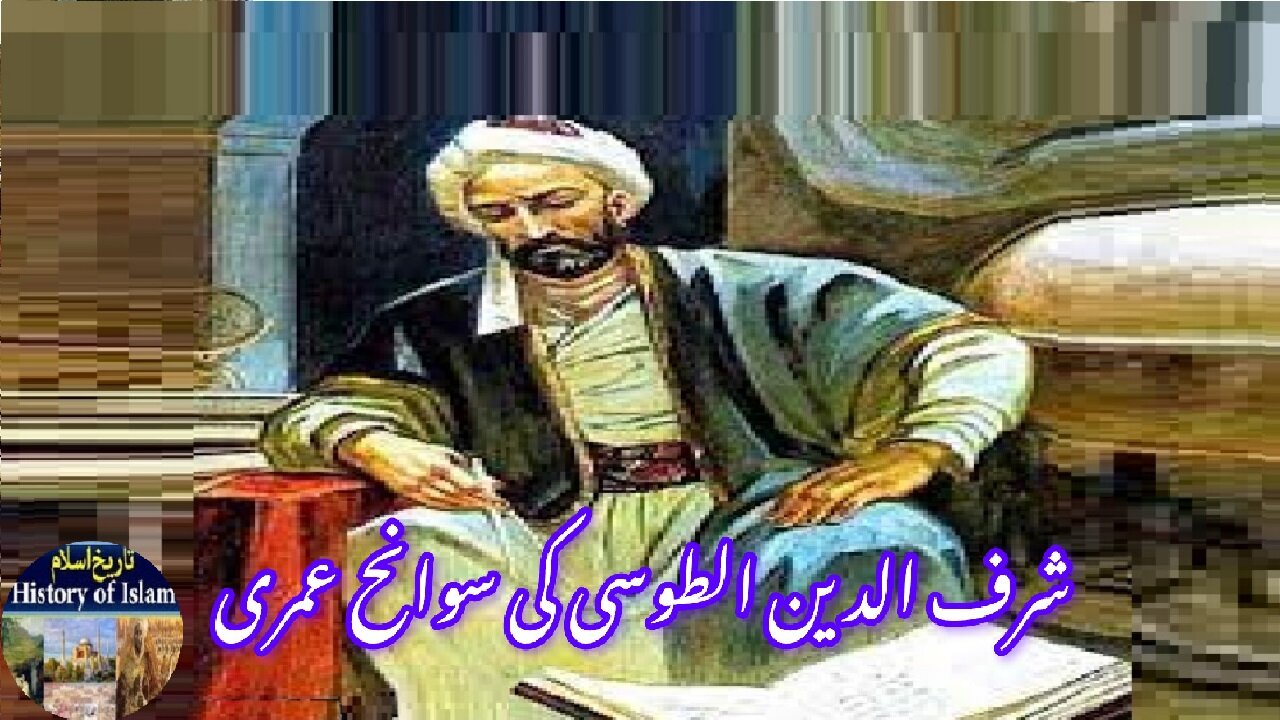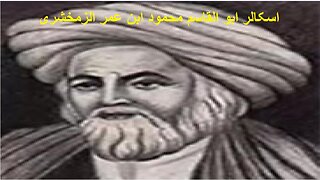Premium Only Content

Biography of Sharaf al Din al Tusi شرف الدین الطوسی کی سوانح عمری۔
@islamichistory813 #sharafaldin #altusi #biography #islamichistory #islamicscholars
Biography of Sharaf al Din al Tusi.
Assalamu Alaikum, sisters, brothers, friends and elders, we welcome you to a series of videos on Muslim heritage and Islamic scholars. and today in this video we will describe biography of Sharaf al Din al Tusi.
Sharaf al Din al Tusi was one of the most remarkable mathematicians and Islamic scholars of the twelfth century, remembered for his pioneering contributions to algebra and geometry. He was born in 1135 in the city of Tus, located in the region of Khorasan in present day Iran. Tus was known during that time as a vibrant intellectual center that produced many leading scholars in philosophy, mathematics, and theology. Growing up in this environment, al Tusi was exposed to scholarly traditions from an early age. His education was shaped by the legacy of earlier Islamic thinkers as well as Greek mathematical traditions that had been translated into Arabic. From his youth, he displayed an exceptional talent for abstract reasoning and mathematical problem solving, qualities that would later make him a central figure in the history of Islamic science.
Al Tusi is especially remembered for his work on cubic equations and his innovative use of geometry to find solutions. Before his time, scholars had already made progress in solving quadratic equations, but cubic equations remained a great challenge. Al Tusi advanced the subject by demonstrating how geometry could be employed to visualize and solve algebraic problems. His treatise on equations presented a systematic classification of cubic equations, and he provided geometric solutions that represented a significant step toward the later development of algebra in both the Islamic world and Europe. In this way, he bridged the gap between abstract algebraic reasoning and practical geometric visualization, making his contributions highly original. His writings reveal a sophisticated understanding of the deep relationship between numbers and shapes, a theme that would later inspire scholars in the Renaissance.
In addition to his contributions to algebra, al Tusi was deeply engaged in astronomy. He made careful observations of the movements of celestial bodies and worked on refining astronomical tables that were used for both scientific and religious purposes. The accuracy of these tables was crucial in determining prayer times, the Islamic calendar, and the direction of the qibla. His mathematical innovations also had a practical impact on astronomy, as they allowed for more precise calculations of planetary motions. He was part of the larger tradition of Islamic scholars who combined mathematics and astronomy to serve both scientific curiosity and religious obligations. His work in this field earned him respect among his contemporaries, and he was often consulted by rulers and institutions who valued the knowledge of scholars in managing both worldly and spiritual affairs.
Sharaf al Din al Tusi spent much of his career traveling between centers of learning in Khorasan, Baghdad, and other prominent cities of the Islamic world. His intellectual reputation extended beyond his homeland, and he was in correspondence with other leading scholars of his time. Despite living in an age of political upheaval, with invasions and shifting dynasties affecting the region, al Tusi remained devoted to scholarship and teaching. His writings circulated widely and influenced not only mathematicians and astronomers in the Islamic world but also later European scholars who drew upon Arabic mathematical texts in their own studies.
Al Tusi passed away around the year 1213, most likely in the city of Tus where he was born. His death marked the end of a life dedicated to the advancement of mathematics and astronomy, but his legacy continued to shape the development of these fields for centuries. His students and later admirers ensured that his works were preserved, and his reputation as a brilliant thinker remained strong in the annals of Islamic intellectual history.
The shrine of Sharaf al Din al Tusi is traditionally believed to be located in Tus, the city of his birth and death. The shrine is a modest yet dignified structure that reflects the simplicity and humility of a man devoted to learning. Over the centuries, it has been visited by scholars, students, and admirers who seek to honor his contributions. The shrine stands not only as a resting place for a great scholar but also as a symbol of the enduring relationship between faith and reason in Islamic civilization. The people of Tus and the broader region of Khorasan have preserved his memory with reverence, and his shrine continues to inspire those who value knowledge and intellectual achievement.
The history of the shrine reflects the deep respect accorded to al Tusi by his contemporaries and later generations. It has been maintained as part of the cultural heritage of Iran, representing both the scholarly greatness of Khorasan and the universal value of mathematical and scientific inquiry. Visitors to the shrine often reflect on the harmony between scientific curiosity and spiritual devotion that characterized his life. The shrine of Sharaf al Din al Tusi remains a place of learning, remembrance, and inspiration, reminding the world of the profound role Islamic scholars played in the advancement of human knowledge.
With this, we ask for your permission until tomorrow and tomorrow we will narrate biography of Al Tamimi. we will also narrate the history of her shrine. Finally, we pray to Allah Almighty to grant us the ability to act on the Quran and Hadith, Amen.
Allah Hafiz
#islam #history #scholars #hadith #quran #sunnah #islamic #legacy #heritage #wisdom #fiqh #knowledge #tafsir #faith #guidance #islamicworld #muslim #islamiclegacy #imams #islamiccivilization #goldenage #truth #ummah
==================================
-
 6:21
6:21
ISLAMIC HISTORY
17 hours agoScholar Abu al Qasim Mahmud ibn Umar al Zamakhshari اسکالر ابو القاسم محمود ابن عمر الزمخشری
7 -
 19:23
19:23
Nikko Ortiz
2 days agoRealistic Halloween Horror Movie Deaths
24.5K11 -
 18:09
18:09
The Pascal Show
9 hours ago $2.24 earnedHE'S PANICKING?! FBI Director Kash Patel Shuts Down Investigation Into Charlie Kirk Assassination
3.56K12 -
 34:55
34:55
BlabberingCollector
1 day agoHBO Set Leaks, Audible AudioBooks Paves New Harry Potter Future, & More! | Wizarding World Roundup
6.25K3 -
 LIVE
LIVE
Lofi Girl
3 years agolofi hip hop radio 📚 - beats to relax/study to
124 watching -
 25:03
25:03
GritsGG
14 hours agoHow to Obtain Warzone VICTORY From a TREE! Casual Solo Gameplay!
14.9K4 -
 2:48:05
2:48:05
FreshandFit
10 hours agoGhetto Fake Russian Disrespected The Entire Panel & THIS Happened...
244K170 -
 1:27:57
1:27:57
Tucker Carlson
7 hours agoTucker and Col. MacGregor Warn How Neocons Are Exploiting the Drug Crisis to Drag America Into War
39.3K152 -
 2:08:50
2:08:50
Badlands Media
12 hours agoDevolution Power Hour Ep. 402: Arctic Frost, Trump’s Third Term & The G2 Showdown
92.7K56 -
 2:05:48
2:05:48
Inverted World Live
11 hours agoUFO Seen Over Tokyo During Trump Visit | Ep. 132
69.5K21